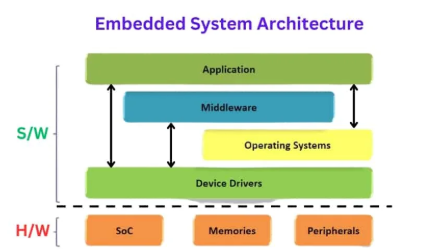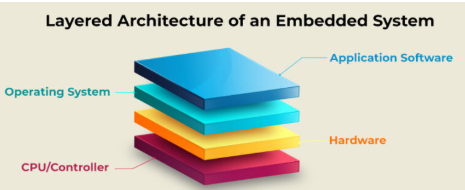Embedded System Architecture
Embedded systems are specialized computing systems designed to perform dedicated functions within a larger system. Unlike general-purpose computers, embedded systems are built to handle specific tasks with high efficiency and reliability. The architecture of an embedded system is a carefully crafted blend of hardware and software components that interact seamlessly to ensure real-time performance, low power consumption, and stability.
At the core of every embedded system is the processor or microcontroller, which acts as the brain of the system. It executes software instructions, processes data, and communicates with other hardware components. The processor selection—whether it is an 8-bit microcontroller, a 32-bit ARM processor, or a digital signal processor (DSP)—depends on the application's complexity and performance requirements.

The memory system is a crucial architectural component and is typically divided into two categories: ROM (Read-Only Memory) and RAM (Random Access Memory). ROM stores the firmware—software permanently programmed into the system, often during manufacturing. RAM is used for temporary data storage while the program is running. Depending on the system, you might also find EEPROM or Flash memory for storing user data or application settings.
Another critical element is the Input/Output (I/O) subsystem. This enables the embedded system to interact with the external environment. Input devices such as sensors, switches, and keyboards allow the system to receive data, while output devices such as displays, motors, LEDs, and buzzers enable the system to communicate results or take action. I/O ports are often controlled using GPIO (General Purpose Input Output) pins.
Embedded systems frequently incorporate timers and counters, which are essential for time-sensitive tasks. Timers help manage delays, schedule events, and generate precise timing signals. Counters are used for counting external events such as pulses from a rotary encoder or button presses.
For systems that need to interact with other devices or systems, communication interfaces are a vital architectural layer. Common interfaces include UART (Universal Asynchronous Receiver Transmitter), SPI (Serial Peripheral Interface), I2C (Inter-Integrated Circuit), CAN (Controller Area Network), and USB. These enable data exchange between components such as sensors, actuators, and even remote servers.

The power management unit is another integral part of the embedded architecture. Many embedded systems operate on batteries or low-power environments, making efficient power usage essential. Components like voltage regulators, power-saving modes, and sleep/wake mechanisms are implemented to maximize energy efficiency without sacrificing performance.
On the software side, the architecture includes the real-time operating system (RTOS) or firmware that controls how tasks are managed and executed. An RTOS provides task scheduling, resource allocation, and inter-process communication, ensuring the system meets real-time deadlines. Not all embedded systems use an RTOS—some rely on simple loop-based programs if the task complexity is low.
Another layer includes device drivers, which act as the bridge between the hardware and higher-level application code. Drivers allow the software to control hardware components without needing to understand their intricate workings. For example, a driver for an LCD screen will provide functions to display characters or images, abstracting away the timing signals and pin configurations.
Middleware and communication stacks are also included in more complex embedded systems. These can provide support for networking (TCP/IP stack), Bluetooth, Wi-Fi, and protocol handling. Middleware allows integration with cloud services or other devices in the network, which is increasingly important in IoT (Internet of Things) applications.
The application layer is where the system’s purpose is realized. Whether it’s controlling a robotic arm, managing a thermostat, or monitoring a heart rate sensor, this layer contains the logic that uses all other system resources to perform its function. Application code is optimized to be fast, lightweight, and stable.
A well-designed embedded system architecture ensures reliability, maintainability, and scalability. Designers must consider not only the current functional requirements but also potential future updates and fault tolerance. Features like watchdog timers, redundancy, and diagnostic tools are incorporated to enhance the robustness of the system.
Embedded systems are found in countless devices—smartphones, home appliances, automobiles, medical equipment, industrial machines, and more. Each of these use cases demands a unique architectural design that balances processing power, size, cost, and energy efficiency.
In conclusion, embedded system architecture is a layered structure combining hardware and software components in a compact, efficient, and reliable way. Understanding this architecture is key to developing innovative solutions that meet the needs of modern technology. As embedded systems continue to evolve, driven by advancements in microelectronics and software, a solid grasp of their architectural foundations will be essential for engineers, developers, and technologists across all domains.